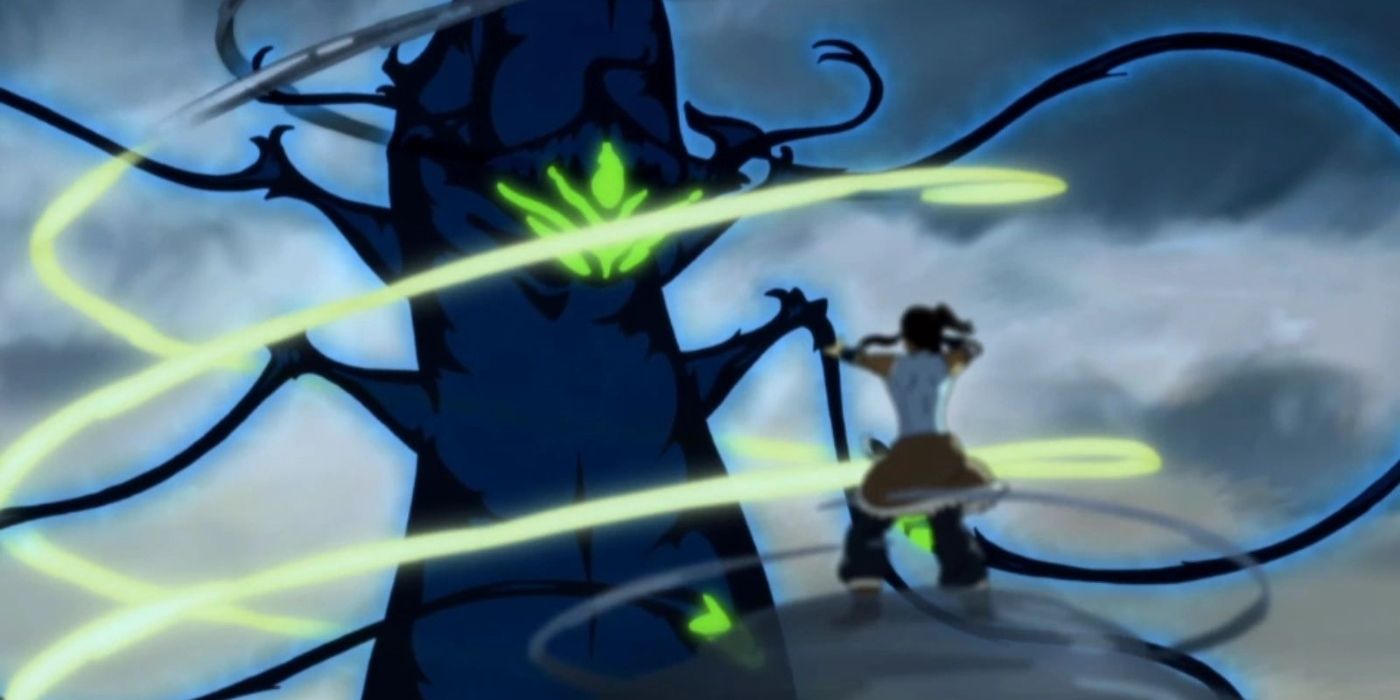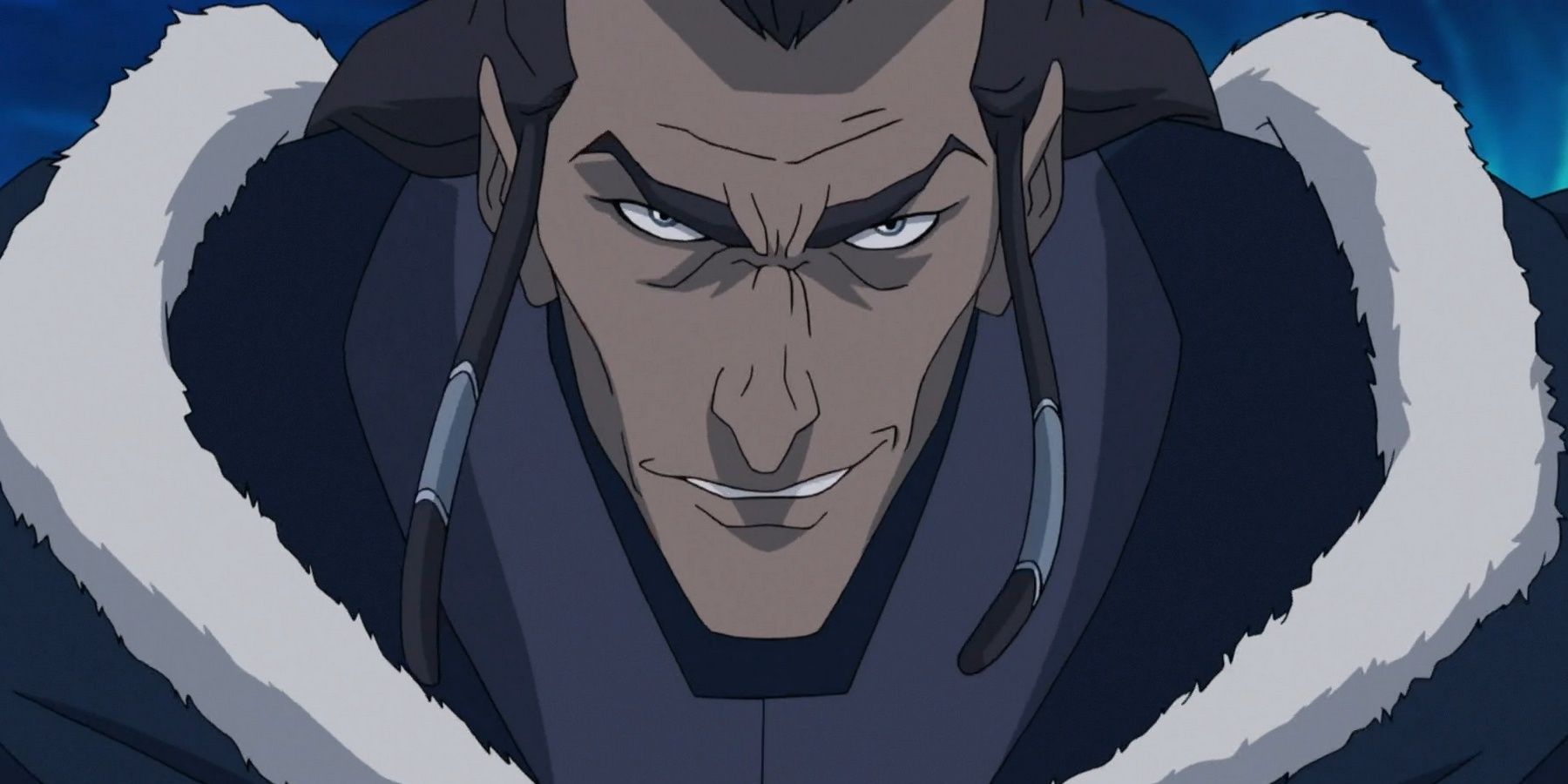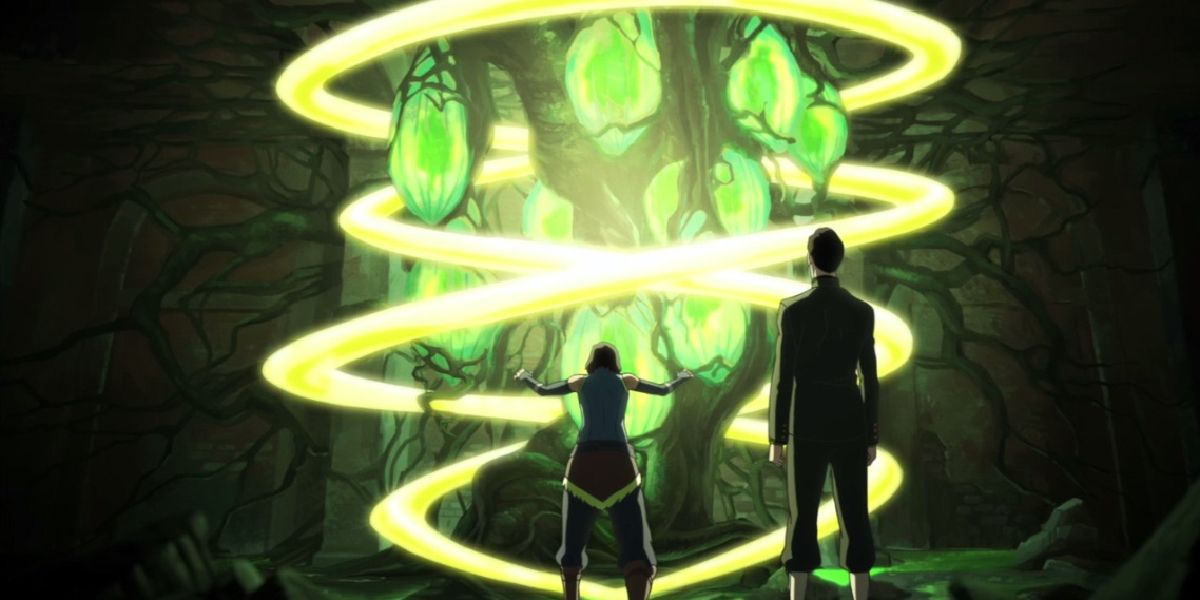Avatar: The Last Airbender had progressive themes and The Legend of Korra advanced them further, but both were constrained by cultural norms and studio intervention that often left them incapable of broaching topics they would otherwise readily discuss in the open. Perhaps the most controversial was the relationship between Korra and Asami that culminated in the same-sex couple getting together in the Korra series finale. When the episode ended just short of a kiss, it was clear there were still strides to be made.
Now the core book for the new role-playing game entitled Avatar Legends is openly discussing matters of gender and sexuality previously unmentioned in the franchise, the progress of the series since then is abundantly clear. The core book introduces multiple characters who do not conform to traditional gender assignments, and one of them sheds a fascinating new light on the history of spiritbending.
The history of spiritbending in Avatar has been explored before, but only briefly. First introduced to fans in the second season of The Legend of Korra, the ability seemed to be unique to Korra's uncle Unalaq shortly before the Waterbender passed the art on to her (much like her father put his unique stamp on waterbending). Spiritbending proves invaluable in combating the dark spirits that beset the Southern Water Tribe, using nearby sources of water to cycle around a spirit and quell their anger so they could dissipate peacefully. There were Firebenders who seemed to display a similar ability when they healed Korra's spirit when she washed up on their shore later that season, but outside of those instances, there were few insights into the nature of the ability.
Spiritbending was probably invented during Korra's era, as the Kyoshi novels intimated that the art form did not exist during the time of the previous Water Tribe Avatar, Kuruk. Kuruk communed with Kyoshi during The Shadow of Kyoshi and told her how she and the Fire Sage Nyahitha searched exhaustively for any means of resisting dark spirits peacefully -- but their endeavors came up empty. But Avatar Legends reveals that one spiritbender did exist before Korra during Roku's Era, and her name was Makittuq.
Makittuq is described by the core book as a powerful Waterbender who developed a rare bending ability that could calm out of balance spirits. The mention stands out as the earliest instance in the Avatar timeline that a practitioner of the ability demonstrated the spiritual art. And that proves to be one of the least interesting things about Makittuq, as the personal struggles that inform her character prove even more fascinating.
As a member of the highly traditional Northern Water Tribe, Makittuq knowing from an early age that she was assigned the wrong gender put her at odds with both her culture and her family. The Northern Water Tribe were known during Aang's era -- over a century later -- to strictly adhere to firm differences according to gender, so in Makittuq's time those struggles were likely even greater. Her difficulties with people became the basis for her relationship with spirits that helped her develop the art of spiritbending.
Makittuq isn't the only diverse character in the new RPG. Avatar Legends includes Dalja Ro, whose own realization they did not conform to their assigned gender during Korra's era led to their use of gender-neutral pronouns. The core book also features numerous same-sex relationships, many of which prove key to plot points in the various campaigns, and the sheer variety of sexuality and gender confirms just how far the franchise has come since the constrained days of Legend of Korra's finale. It's no longer just featuring morally complex characters, but characters who are complex in every way possible.
Trans characters and valuable pieces of canon history go hand-in-hand in Avatar Legends, which explores the broad varieties of human life alongside its own lore (after a brief paper shortage). Fans of the franchise can lose themselves in the mythology the tome contains, and more people than ever can identify with a series increasingly reflective of the fans who care for it so much.




